Photo: Sunset on McAlpine Road

Sunset on McAlpine Road from yesterday, submitted by JoAnne Meiser.
Indian Falls is a public safety issue with no obvious solution

Deep in the Sierra Madre Mountains on the West Coast are the California Caverns, a cave system that twists in a 30-foot descent until it reaches an abrupt 180-foot drop.
Spelunkers can now safely -- relatively speaking -- reach the bottom of this otherwise-seemingly bottomless pit. What Park Rangers have found in this dark, dank chamber are skeletal remains dating back centuries. The bones discovered there are always those of adolescents who took one step too many while seeking adventure.
Robert Sapolsky, a neuroendocrinologist and professor at Stanford University, used this example of adolescent risk-taking in his book Behave: The Biology of Humans at Our Best and Worst.
Adolescents, research has shown, engage their prefrontal cortex less than adults when assessing risk.
By way of example, Sapolsky writes, "Researcher: 'How likely are you to have a car accident if you’re driving while drunk?' Adolescent: 'One chance in a gazillion.' Researcher: 'Actually, the risk is about 50 percent; what do you think your own chances are now?' Adolescent: 'Hey, we’re talking about me; one chance in a gazillion.' "
It's not just that adolescents do an inadequate job of assessing risk, but adolescent brain chemistry also drives them to seek more novelty and desire a close affiliation with peers.
That is one reason, perhaps, it is going to be difficult for local authorities to prevent another death -- and there have been at least 14 since 1870 -- at Indian Falls.
The other issue is there is no clear answer as to who is responsible and accountable for what happens at Indian Falls. County officials and state officials have looked into it. There is no record of anybody -- not a private owner, not the government -- having title to that section of the Tonawanda Creek, even though it was once a site of grain mill wheels.
Former County Manager Jay Gsell said Indian Falls were a vexing issue for local officials throughout his 27 years running Genesee County. The last time during his career he and county staff looked into the issue was after Bradley Augustin drowned at the falls while celebrating his 22nd birthday. At that time, Assistant County Clerk Steve Grice researched the title for the land. He found nothing. No former owner, no previous deed, no old tax map that assigned the property to anybody.
"We tried to find out, does anybody have the ability to assert legal authority over the property, to block all access? And the answer was no," Gsell said.
While private property abuts the falls on both sides and people often trespass on adjoining private land to get to the falls, the falls are also accessible from public land, notably Route 77 and its shoulders.
The property owners on the south bank of the Tonawanda Creek at the falls have been aggressive about trying to block access to the Tonawanda but those efforts at times have seemed futile. As for the state, neither Department of Transportation nor the Department of Environmental Conservation claimed state ownership of the land.
From the DEC:
The ownership of that section of Tonawanda Creek is unknown and would require a deed and title search at Genesee County to ascertain ownership. It is not DEC land. DEC enforcement jurisdiction in this area is the same as similar creeks throughout the state under the Environmental Conservation Law. For more information about trespassing laws for private land, please contact local law enforcement.
From the DOT:
NYSDOT would review any proposal from local officials to enhance safety along State Route 77 near the bridge over Tonawanda Creek. Guide rail is already in place and the surrounding area is posted for no trespassing.
The Log Cabin Restaurant overlooks the falls and the business is impacted anytime there is a rescue or recovery event at the falls. The owners have tried fencing and "no trespassing" signs.
A representative from the business said, "We have made our best efforts to keep people out of the dangerous swimming area."
In April, two months before Jacob C. Minnick, an 18-year-old championship diver from Lockport, jumped off the falls on June 17 and drowned, Barry Guthrie, a homeowner on the southside of the falls, wrote to the Pembroke Town Board. Over the course of a six-page letter, he outlined his efforts to try to keep kids from endangering themselves at the falls. He also offered to buy the falls so he could enforce private property rights at the falls themselves.
In 2020, he obtained a permit and built a 40-foot long fence with a locked gate at the main path from the restaurant parking lot across his property and to the falls. He said he still observed people in swimsuits, with towels and their own food and drinks, heading to the falls.
"These people were very persistent in getting down into the falls and were going around the fence's side perimeters," Guthrie wrote. "I secured a second building permit with the Log Cabin Restaurant owner to install two fence extensions on both side perimeters of the main fence."
That didn't stop people trying to get to the falls.
"People threw their bodies full force into the main gain and rotated the gate latch to open up the gate," he wrote.
Would-be swimmers also used bolt cutters to defeat attempts to keep them from taking a fatal dive.
Throughout the season he tried numerous tactics to reinforce the fence but people continued to attack it. He installed trail cameras after four teenagers were rescued at the falls in July 2020. Even his cameras have been vandalized (he identified one local resident by name as a suspected culprit). With the cameras, he counted 33 trespass occurrences of four to five people each for a total of 140 possible trespassers.
"During this time, people had no respect for my property even though I had multiple trespassing signs posted," he wrote. "People stole my trespassing signs. They also stole my chain with my trespassing sign still attached."
The only people he charged with trespassing were the four youths who had to be rescued.
In one incident he took pity on the trespassers.
"I was at an anger level that I was going to charge everyone with trespassing," he wrote. "The police officer told me they wanted to talk with me and apologize and just get a warning. I was so upset that I didn't want to speak with them. Then the officer told me that one of the persons was in an internship with the Niagara Falls police department and another was in an FBI training program. Unbelievable! I didn't want to ruin their job potentials so I just let them all go with a warning."
Even with his efforts being circumvented at times, Guthrie estimates that he has stopped as many as 600 people from reaching the falls.
The Town of Pembroke has also tried to do what it can to discourage people from going to the falls -- which is promoted on social media as a place for adventure -- by posting no parking signs on roads close to the falls.
Brian Frieday, chief deputy of road patrol for the Sheriff's Office, said officers are aware of the no parking signs and do what they can to maintain public safety.
"We do try to be proactive and check the area when not on other complaints," Frieday said. "Obviously, when patrols see cars parked illegally, that is a sign there are potentially people there. The illegally parked cars are ticketed and the patrols check for people at the falls."
Guthrie has researched the cost of putting up more fencing on public land around the creek, including DOT land, and he estimates it would cost $11,000.
At its June 25 meeting, the Pembroke Town Board discussed Guthrie's letter and was at least somewhat receptive to the idea of approaching the DOT about putting up additional barriers but at the same time, additional barriers aren't going to stop any youth determined enough to get to the falls.
"You can put up more fencing along the bridge but that isn't going to stop anybody from going down along state property, going around the fence," Supervisor Thomas Schneider said. "You can't put a fence in the waterway."
Guthrie's other idea: Work out a way either by contacting State Senator Ed Rath or a judge and getting clearance to buy Indian Falls for $1 and then he can enforce no trespassing on the falls.
That proposal was met with a bit more skepticism from Pembroke's elected leaders. First, they doubt such a purchase is even possible. Second, what would stop somebody else from offering more money for the property, or if at some time later, somebody comes along and offers an outrageous amount of money to Guthrie for his property?
The board seemed inclined to take no position on Guthrie's offer.
They did discuss the idea of putting up more warning signs.
Board Member Tom Dix said, "We could put up a sign at each end of the bridge that said so many people died here in the last 20 years, just a warning."
Schneider said he has had similar thoughts.
"I thought about how to word it," Schneider said. "If you insist on going down here be sure to call your mother and say goodbye or something. I don’t know how to be tactful about it but get the point across."
The board didn't take any action after the discussion. Nobody said it, but there isn't a clear answer on what to do about adolescents taking a big risk with their lives at Indian Falls.
Further reading: A list of tragedies at Indian Falls going back to 1870 complied by the Town of Pembroke historian (pdf).
Photo: A reader-submitted photo from 2016 of a marker at Indian Falls placed in memory of Bradley Augustin.
One teacher, a thousand students, more than five decades in the classroom add up to 'an incredible ride'
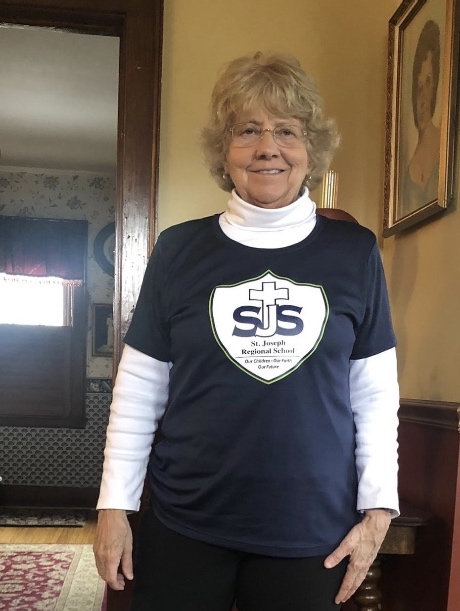
When I began this article, I wanted to write about my second retirement from teaching. I was going to share my beautiful memories of the 1,000 students I have taught.
I wanted to talk about the fantastic field trips, classroom drama productions, learning about local history, and using the Holland Land Office Museum as a textbook. I was about to begin to expound on those treasured memories when my train of thought took me to what it was like to be a teacher for over five decades.
It was 1972; I was a lucky college graduate to have a teaching job. I was a young unmarried woman and my maiden name was Anne Marie Peca. It was a time of miniskirts, long hair, and the Viet Nam War. You just left your college and were entering your classroom with so many new things to learn.

Everything was new, and it was so exciting and overwhelming.
You had to know where to find films for your filmstrip projector and how to thread a 16 mm movie. If you needed copies for your students, you made and ran off a ditto on a ditto machine.
You never slept the night before the first day of school, no matter how many years you taught.
My first job was at Wolcott Street School in LeRoy (in 1972, inset photos above and below). I have so many treasured memories from my five years of being on their faculty.

My next teaching adventure was being a nursery school teacher at the YWCA. This allowed me, now Mrs. Starowitz, to teach but also be home with our daughters.
In 1985, I was hired to be on the faculty of the Batavia City school system. I spent the next 34 years on their faculty as a teacher and then as a substitute teacher.
I ended my career this year as a teacher at St. Joseph Regional School, where I graduated from eighth grade in 1964.
Over the years, teachers were required to change with the times. Many innovations such as teaching strategies, behavioral plans, grade-level subject changes would be introduced, and as a teacher, you were mandated to add them to your curriculum.
As far as technology, a teacher could now have a cassette tape player instead of a record player, and possibly one computer in the classroom using floppy discs.
Later on, there were groups of computers in a classroom, and today most children have a Chromebook as their personal computer.
There was a new classroom configuration called the multiage classroom, where you would have two classes in the same room. There was also looping where you take your class from one grade level to the next.
The Education teacher needs has also changed over the years. There is so much a young teacher needs to do before they have a classroom.
There were so many beautiful memories as a teacher, but there were also tragic memories. The saddest memory was losing a student and attending the funeral. There are never any words for those tragedies.
On Jan. 28, 1986 my fourth-grade class watched Christa McAuliffe, a teacher, go into space to die in an explosion on the NASA space shuttle "Challenger."
I taught through the Viet Nam War, Persian Gulf War, Iraq War, war in Afghanistan, and the 9/11 terrorism attacks. I taught children how to behave in a fire drill, evacuate a building, and practice a lockdown drill. This past year, I taught 18 students sitting 6 feet apart wearing a mask — socially distanced learning during the coronavirus pandemic -- so many changes.
The one thing that is a constant is how many hats that a teacher wears. Yes, you have a curriculum of what to teach, but you have to earn your student's respect before you can teach.
They are so intuitive; they know if you care about them. At times you are a parent, a nurse, and a therapist. We wear these hats proudly, and today my hat is off to all the excellent teachers I have had the pleasure of working with over the years. They indeed are heroes. I love this saying, "If you can read, thank a teacher!"
I can't end this without mentioning all the beautiful children I have taught over the last five decades. Those 1,000 students have left an imprint on my heart. To those students, thank you for giving me a lifetime of cherished memories. It has been an incredible ride.
"The greatest sign of success for a teacher...is to be able to say, 'The children are now working as if I did not exist.' "
-- Maria Montessori
Two inset black and white images above are from O-At-Kan LeRoy Yearbook 1972.
Photo below, Mrs. Starowitz's last class -- from St. Joseph Regional School -- in a teaching career spanning more than five decades.

Town of Bethany GOP seeks nominees to serve out town clerk's unfinished term
PUBLIC NOTICE
The Town of Bethany Republican Committee is seeking individuals who are interested in being considered for nomination to serve out the unfinished term of the Town Clerk, which will end in 2023. The position exists due to a recent retirement of the incumbent Town Clerk.
The Committee will be meeting on Friday, July 16th at 5 p.m. at the Town of Bethany Community Center, 10510 Bethany Center Road.
Those interested please send letter of intent to: Thomas J. Douglas, 10515 East Road, Pavilion, NY 14525.
Or contact Mr. Douglas at:
Cell: (585) 356-0824
PAARI's executive director to speak at Tuesday's event at City of Batavia fire headquarters
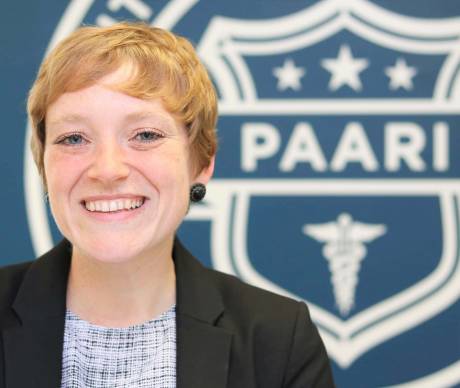
Submitted photo and press release:
Leaders of the Public Safety Assisted Addiction & Recovery Initiative in Genesee County have been informed that Allie Hunter, PAARI’s national executive director, will be coming to Batavia to speak at Tuesday’s event showcasing the participation of the City of Batavia Fire Department.
The program is scheduled from 11 a.m. to 1 p.m. at fire headquarters at 18 Evans St.
Hunter (photo at top), in her role as executive director of the Boston, Mass.-based organization, coordinates training, technical assistance, and strategic guidance to police to help them when dealing with individuals using alcohol or drugs, or in recovery.
An authority on policing as it relates to the opioid epidemic, she was deputy director of the Nonviolent Initiative for Democracy, and has worked at several other Boston-area nonprofit agencies, including ZUMIX and Bikes Not Bombs.
In the spring of 2017, Hunter received a Nonprofit Excellence Award and was named Young Professional of the Year by the Massachusetts Nonprofit Network. In fall 2018, she accepted an AmeriCorps Excellence Award for PAARI’s first-of-its-kind program that embeds national service members in police departments to address the opioid epidemic.
PAARI, officially known as Police Assisted Addiction & Recovery Initiative, is designed to provide support and resources to help law enforcement agencies nationwide create non-arrest pathways to treatment and recovery.
The public is invited to attend the Tuesday's event, which will feature local public safety officials as well as representatives of the Genesee County Health Department, Greater Rochester Health Foundation, Genesee/Orleans Council on Alcoholism and Substance Abuse, and GOW Opioid Task Force.
Genesee County participants are the Genesee County Sheriff’s Office, City of Batavia Police Department, Village of Le Roy Police Department, City of Batavia Fire Department and Genesee/Orleans Health Department.
Complimentary food and beverage will be provided.
To register for this event, click here. Once registered, individuals will be contacted for their lunch selection.
For more information, contact Christen Ferraro, GRHF project coordinator, at cferraro@gcasa.org.
Sponsored Post: Open House - 13 N. Lyon St., Batavia

OPEN HOUSE - Sunday July 11th - 13 N. Lyon St. in Batavia. This house is the Mary Poppins of Batavia real estate...It’s perfect in every way! Beautifully updated, you will love the bonus room and the large second-story open porch. Three beds and two baths along with a finished third floor.
Come visit the open house Sunday between noon and 2 p.m. See you then! Click here to view my listings!
Video: Fire at Summit Lubricants
Ten fire companies, including Town of Batavia and City of Batavia, were called out to Summit Lubricants, 4080 Pearl Street Road, Batavia, for a fire of unknown original late Friday afternoon. It was difficult to suppress because of the industrial setting.
Possible structure fire reported on Pearl Street Road, Batavia
A possible structure fire is reported at 4080 Pearl Street Road, Batavia.
Town of Batavia dispatched and there is a second alarm called for East Pembroke, Darien, and Oakfield to stand by.
Thinking about becoming a cop in Batavia, Genesee County? Civil service test is mid-September
Now is an opportune time for individuals who are serious about becoming a law enforcement officer in Genesee County.
Batavia Police Department Chief Shawn Heubusch and Genesee County Sheriff William Sheron have announced that potential candidates for positions at those two agencies can take the civil service examination on either Sept. 18 or Sept. 19. The exact date will be announced.
All applicants must file for the examination with the Genesee County Human Resources Department by Aug. 4.
Heubusch said the Batavia PD currently has one opening, while Sheron said the sheriff’s office is down six deputies.
“We currently have one vacancy,” Heubusch said. “This announcement is for the exam that was supposed to take place last year, but was postponed due to COVID.”
CITY OF BATAVIA PD
Heubusch said the city, as part of the police reform plan submitted to New York State per Gov. Andrew Cuomo’s Executive Order, “is committed to working with our local government partners and various groups and organizations in reaching out to the community to promote and publicize these important career opportunities in law enforcement.”
“It’s important that the composition of the police department reflects the community it serves and protects -- and that starts with making people aware that the police exam is coming up.”
Those with questions regarding the hiring process and other information about how to become a police officer can contact the Batavia Police Department by email at bpdrecruting@batavianewyork.com or by calling (585) 345-6360 and ask to speak with a member of the Recruiting Committee.
GENESEE COUNTY SHERIFF’S
Sheron said that along with the civil service test in September, his office is conducting background checks on three individuals and there is another recruit in basic academy who will graduate in August.
“Being down six hurts us, but we’ve been down this many before,” he said. “The guys all step up, using overtime and so forth.”
The sheriff said it will take quite some time to fully replenish the deputy staff when you consider having to receive the test results and also conduct interviews, background investigations and psychological tests.
“And then we have to put them through the academy, which is a six-month ordeal, so we’re probably looking at nine months to a year before we’re back to full staff,” he advised. “However, we do have a couple people who are considering lateral transfers from other police agencies over to ours.”
LINKS TO PERTINENT INFORMATION
Interested candidates can visit the Genesee County Human Resources Department’s website for more information on how to apply to take the examinations: https://www.co.genesee.ny.us/departments/humanresources/exams.php
The following links provide information on the physical fitness testing procedures and civil service study guide for entry level police officer exams:
https://www.co.genesee.ny.us/Physical%20Fitness%20Test%20Guidelines.pdf
https://www.co.genesee.ny.us/docs/hr/entry_level_police_officer_test_gui...
Both Heubusch and Sheron emphasized the need for potential candidates to start the training process immediately to be prepared to take the physical agility test after the written civil service exam.
Grand Healthcare System honors their hometown heroes with ticker tape parade
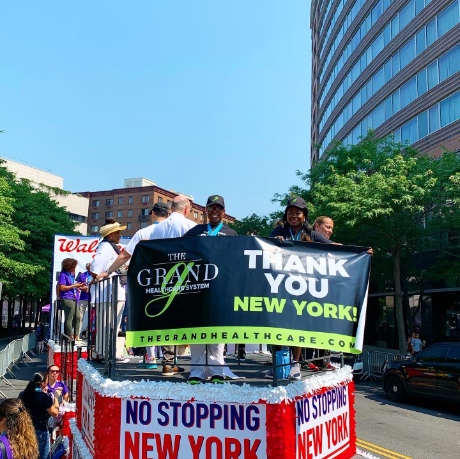
Press release:
The Grand Healthcare System announced Wednesday (July 7) their participation in the New York "Hometown Heroes" ticker tape parade, which took place down the Canyon of Heroes in Lower Manhattan.
A true celebration of essential workers who supported New Yorkers throughout the COVID-19 pandemic. The Grand Healthcare System employees were on floats and marching in the parade representing thousands of their hardworking team mates who worked tirelessly for the residents, their families and loved ones, and their entire communities, which was unparalleled.
In Genesee County, this includes The Grand Rehabilitation and Nursing at Batavia, located at 157 State St.
"Our Grand family was there day and night to provide the highest quality of care, support, and encouragement during this extremely challenging time," said Jeremy B. Strauss, chief executive officer of The Grand Healthcare System.
"This was a monumental team effort, one which our awe-inspiring team of professionals handled with courage, perseverance, and dignity."
Wednesday's parade began at Manhattan's Battery Park, and continued along the Canyon of Heroes, and ending at City Hall Park.
The Grand Healthcare System is proud to honor its Grand Heroes who were there representing each and every Grand Family employee. It was an honor and a privilege to join the parade and honor all of our Hometown Heroes.
Hey kids! GC STOP-DWI Night at the Ballpark is Thursday -- gates open at 6, lots of prizes
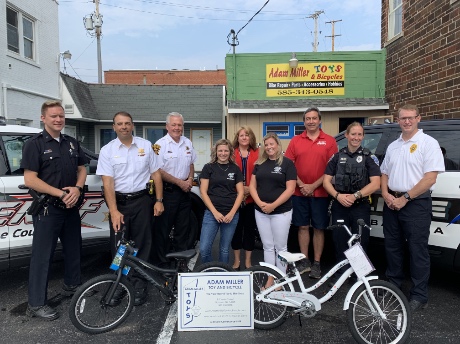
Submitted photos and press release:
Join Genesee County STOP-DWI and the Genesee County Youth Bureau for a night of family fun as they team up to host the STOP-DWI Night at the Ballpark on Thursday, July 15, gates open at 6 p.m.
The Batavia Muckdogs will take on the Jamestown Tarp Skunks.
The first 100 youths will receive a T-shirt or Muck Bucks for purchases in the ballpark. An additional 500 giveaways and prizes will be given throughout the night.
The grand prize of a youth bike from Adam Miller Toy and Bicycle.
Fun and interactive educational booths and displays will be available for families and children to visit.

While assigned to patrol division, he was very active in DWI enforcement, and awarded the Genesee County STOP-DWI “Top Cop Award” in 2016. In 2017, Detective Wojtaszczyk became a drug recognition expert (DRE), tasked with assisting fellow officers who are investigating individuals suspected of driving while impaired.
Detective Wojtaszczyk remains active in community outreach events, including the STOP-DWI Night at the Ballpark.
Event sponsors and contributors: GCASA, Gerace Realty, Kiwanis Club of Batavia, Marchese Computers, Police Benevolent Association, United States Gypsum Co., Batavia Lions Club, The Original Red Osier Landmark Restaurant, Western New York Association of Chiefs of Police, Polish Falcons, Adam Miller Toy and Bicycle, and Walmart.
Join us for a great night at the ballpark and remember impaired driving is completely preventable. All it takes is a little planning.
Gates open at 6 p.m. and the game starts at 7:05 p.m.
Top photo, from left: Le Roy Police Chief Greg Kellogg; Genesee County Undersheriff Bradley Mazur; Genesee County Sheriff William Sheron; Chelsea Green, with the Genesee County Youth Bureau; Tammi Ferringer, STOP-DWI coordinator; Chelsea Elliott, with the Genesee County Youth Bureau; John Roche, owner of Adam Miller Toy and Bicycle; Officer Felicia DeGroot, of the Batavia Police Department; and Batavia Police Chief Shawn Heubusch.
Genesee County leaders present plans to distribute $10 million in sales tax/other revenue to towns and villages
Despite the efforts of state representatives in Albany, the Genesee County Legislature’s hopes for enabling legislation to remedy its sales tax and revenue distribution dilemma have been dashed by the Democratic majority in the New York State Assembly and Senate.
"Senator (Edward) Rath and Assemblyman (Steve) Hawley tried everything they could to make this happen, but their colleagues in the majority didn't agree," said Legislature Chair Rochelle Stein on Thursday night.
So, as a result, county leaders have come up with a plan on their own – actually two options depending upon buy-in to updated water agreements from all municipalities – to ensure equitable sharing of revenue to Genesee’s towns and villages.
On Wednesday, Stein and County Manager Matt Landers presented their solution at a meeting of town supervisors and village mayors at the Old County Courthouse.
The Batavian has attained a copy of the discussion outline, which includes the following two options that are on the table:
(1) Distribute $10 million annually to the municipalities in sales tax revenue for the next 38 years as long as all towns and villages sign updated water supply agreements by Aug. 13. As of today, the Towns of Darien and Pembroke and Village of Corfu have yet to sign.
OR
(2) Without universal updated water supply agreements, the county will allot $7 million for annual sales tax distributions to towns and villages, and pass annual revenue distribution resolutions for another $3 million, to allow for the equalization of water surcharge revenue.
SEEKING THE STATE’S HELP
Landers said the county’s current revenue sharing process has created a situation, per state law, where towns with villages inside them have to keep two separate books and have two separate tax rates – an A fund for townwide sales tax that affects everyone and a B fund for sales tax that only affects the services of taxpayers outside the village.
“(State legislation) would have fixed an accounting issue with towns that also have villages,” Landers said.
Unfortunately for the county, state lawmakers didn’t go for the idea.
“The enabling legislation that we were seeking during this last New York State session was to be able to allow the towns that had villages inside them to receive that revenue distribution into their B funds, which was the unintended consequence of revenue distribution,” Stein said. “That failed to get picked up in Albany.”
She said the majority in both chambers “felt the county of Genesee was trying to usurp the power of the state. Therefore, (they were) not interested in helping Genesee County fix that B fund revenue issue.”
ALL IN ONE BASKET?
Now, the county is looking to place all the municipalities back into the sales tax revenue pool.
“The risk to the county in putting everyone back into the sales tax is that we have that water surcharge to help pay for the big water – to bring it into the county,” Stein said. “Without having all 20 towns and villages sign on, we would then most likely get sued by the other 17 that are paying the surcharge – and we would deserve it, let’s put it that way.”
She explained that the $10 million figure that the county is committed to putting into the sales tax agreement would fix the unbalanced A and B tax rate in all but one town – “and that one, through some shared services, could happen very quickly. The $7 million would fix three.”
Should the Towns of Darien and Pembroke and Village of Corfu opt into the water agreement, the county would be able to distribute the $10 million in sales tax revenue to the towns and villages, with the amounts determined by the taxable assessed value of each municipality and equalization rates.
“If those two towns and one village decide not to opt in to the water agreement, the county – in order to equalize the surcharge of the $1.20 per thousand (gallons) for the water users – would have to go to revenue distribution without those three signed agreements (option 2 above),” Stein said.
Calls and emails to Darien Town Supervisor Steve Ferry Jr., Pembroke Supervisor Thomas Schneider Jr. and Corfu Mayor Thomas Sargent for comment were not returned at the time of the posting of this story.
Landers said that he plans to meet over the next couple weeks with government officials in those locations.
“We’re not looking to single out those municipalities,” he said. “I understand they are trying to do the best for their residents.”
A NEW SALES TAX AGREEMENT
In order to make this work, the county needs the Batavia City Council to agree to amend the 40-year sales tax agreement (there are 38 years remaining). The current agreement is only between the county and the city.
“This is a fix that the county has available to us; the county has no skin in this game,” Stein said. “The sales tax agreement is between the City of Batavia and the county, and those are the signatories still to this agreement. We are both amenable to fixing that unbalanced rural property tax situation.”
Landers pointed out that as things stand now, revenue distribution has to go to the town’s A fund; it is not allowed to go to the B fund.
“It would disproportionately hurt rural taxpayers – farms, rural landowners,” he said. “Genesee County legislators agree that unbalance taxation can not continue on rural property taxpayers. Going back to a sales tax model was the only option once the enabling state legislation failed.”
He also credited City Manager Rachael Tabelski for being amenable to revising the sales tax contract.
“It doesn’t impact the City of Batavia one penny, but they understand that if they amend the sales tax agreement it would help our town taxpayers. Rachael was absolutely 100 percent on board with doing this,” Landers said. “Sales tax instead of revenue distribution fixes the problem with rural taxpayers.”
HOW WILL IT WORK?
According to the plan outline, the proposed amended sales tax agreement between the county and city would be dated July 1, 2021 to limit the exposure of towns with villages accounting for voluntary revenue distributions incorrectly in their B funds.
Landers said that revenue distributions would be finished for this year ($5 million has been doled out through June 30), and that two quarterly sales tax payments totaling $5 million will be made before the end of 2021.
“Starting in 2022, quarterly payments totaling either $10 million or $7 million will be distributed. If it is the $7 million figure, then an additional $3 million in voluntary revenue distribution payments will be made,” he reported.
The timeline indicates that a draft of the new sales tax agreement will be sent to the state Comptroller’s Office for review by July 19, and a resolution to cancel the remaining payments for 2021 will be taken to the county’s Ways & Means Committee on July 21. The full legislature would consider that resolution a week later.
The goal is to have an amended signed sales tax agreement sent to the Comptroller by Sept. 14 for formal approval.
HOW MUCH WILL BE DISTRIBUTED?
Following are the projected amounts to be dispersed to the towns and villages, with the first figure based on a $10 million sales tax distribution and the second figure based on a $7 million sales tax distribution:
- Town of Alabama -- $407,659; $285,361.
- Village of Alexander -- $71,006; $49,704.
- Town of Alexander -- $398,581; $279,007.
- Village of Attica -- $28,333; $19,834.
- Town of Batavia -- $1,687,937; $1,181,556.
- Village of Bergen -- $198,962; $139,273.
- Town of Bergen -- $508,589; $356,012.
- Town of Bethany – $408,961; $286,273.
- Town of Byron – $461,621; $323,135.
- Village of Corfu – $137,653; $96,357.
- Town of Darien – $970,992; $679,694.
- Village of Elba – $106,620; $74,634.
- Town of Elba – $360,317; $252,222.
- Village of Le Roy – $718,277; $502,794.
- Town of Le Roy – $822,270; $575,589.
- Village of Oakfield – $199,387; $139,571.
- Town of Oakfield – $299,202; $209,441.
- Town of Pavilion – $543,151’ $380,206.
- Town of Pembroke – $1,020,483; $714,338.
- Town of Stafford -- $649,999; $454,999.
Night Owls Welcome! Preregister for nocturnal insect adventure at GC Park & Forest tomorrow night
Press release:
It’s a different world when the sun goes down in the forest! Join us for a nocturnal insect adventure at the Genesee County Park & Forest on Saturday, July 10th from 9:30 – 11:30 p.m.
Wayne Gall, Ph.D., will attract night-flying insects to a white sheet with a mercury vapor light and identify them. See these mysterious insects up close and learn cool facts about their natural history!
Meet at the Interpretive Nature Center and walk to the outdoor location. Masks must be worn while indoors and when unable to maintain six feet of social distance. Cost is $5/person, $10/family. Preregistration is required, call (585) 344-1122!
Notre Dame welcomes four new faculty members, thanks three departing teachers, seeks FT Physics instructor
Press release:
Notre Dame Junior/Senior High School would like to extend an enthusiastic welcome to the new additions to our Notre Dame Faculty:
Thomas Bringenberg III -- Class of 2003 alumnus -- Mr. Bringenberg will be joining our junior high team as the seventh- and eighth-grade Social Studies teacher. Mr. Bringenberg brings 12 years of middle school teaching experience along with a plethora of other talents, including but not limited to, the coaching of four different sports! Welcome Mr. Bringenberg!
Andrew Ferris -- Class of 2004 alumnus -- Mr. Ferris will be taking over as our Global Studies teacher for grades nine and 10. He is already well acclimated with our students and school as he has been substitute teaching and coaching modified basketball for the last three years. Mr. Ferris's love and dedication to Notre Dame will, without a doubt, carry over into the classroom and the entire ND community. Welcome Mr. Ferris!
Lisa Antinore -- Mrs. Antinore is an experienced and dedicated teacher and parent to Jay, Class of '24, and Chase, Class of '27. She will be joining our junior high team as our new seventh- and eighth-grade English teacher. Mrs. Antinore has over eight years of teaching experience in the Batavia City School District. She is an avid volunteer, and her extensive background with providing an interactive learning experience to a diverse population of students makes us very excited! We look forward to what she does next! Welcome Mrs. Antinore!
Corinne Armison -- Mrs. Armison will also be joining our junior high team as our new Math teacher. Mrs. Armison brings over 14 years of teaching experience and is well versed in classroom management and differentiated instruction. She is excited to assist our students in reaching their potential by customizing their education to ensure that they are able to excel academically through their unique learning styles! Welcome Mrs. Armison!
With great sincerity we would like to thank Mr. Matthew Landfried Jr. (Social Studies), Ms. Julia Quebral (Physics), and Mr. Andrew Calire (Social Studies) and wish them the best of luck as they move on to pursue other opportunities. You will be missed! God bless!
Finally -- we are in search of a full-time PHYSICS teacher. If you would like to join our family, please send credentials and resume to wade.bianco@ndhsbatavia.com or call (585) 343-2783.
Company planning community solar project in Le Roy told to take proposal back to ZBA for review
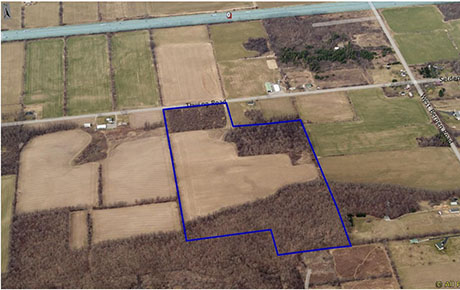
Concerned about setting a bad precedent, the Genesee County Planning Board on Thursday rejected a proposed public utility use variance for a solar project on farmland at 7120 Thwing Road, Le Roy.
County Planning Director Felipe Oltramari told Ty Baccile, project manager, solar development for Washington, D.C.-based CleanChoice Energy, that the company was going in the wrong direction requesting a public utility use variance.
"I think you skipped a step in not getting an interpretation from the (Le Roy) Zoning Board of Appeals," Oltramari said. "It falls under their jurisdiction to provide a definition for a public utility. If they determine you fall within that definition, then just apply for a special use permit."
CleanChoice Energy began working with Gary W. Clark and his family of farmers in 2019 on siting the project but since developing the initial proposal, the Town of Le Roy has passed new solar farm regulations. The regulations' new code means a project such as this must fall within the definition of a public utility.
Based on prior case law and state codes, Oltramari said the county planning board can't make that determination without setting a precedent that would affect solar project zoning codes in other towns.
However, if the Le Roy ZBA determined the project fit the public utility definition, then the decision remains confined to how Le Roy interprets its own codes.
The Clark family, three generations of farmers with more than 575 acres of cropland in Le Roy and Stafford, settled on a solar project as a way to supplement and diversify their company's revenue stream. The proposed project represents 5 percent of the farm acreage and is considered less suitable farmland.
CleanChoice Energy is proposing a 4.95-megawatt solar project on the property.
The project, under state law, is defined as a "Community Solar Project." Solar power from such projects is only distributed locally and cannot be carried to other regions via transmission lines.
There is a limited hosting capacity for these types of solar projects.
Substations and three-phase distribution feeds can only support a small number of these projects and facilities must be sited close to substations.
The projects are also limited by a shortage of land suitable for hosting them. Environmental, regulatory, and permitting constraints at potential host sites eliminate many properties from consideration. Prime farmland, wetlands, land hosting threatened and endangered species, and acreage that's just too expensive are not viable options.
Among the selected parcel's advantages are: that it is relatively flat; will connect to existing National Grid power lines; will not interfere with farm operations; few trees will need to be removed; and existing trees and bushes create a visual barrier; it sits at the top of a hill --making it less visible to surrounding residents (nobody is looking down on it).
Motorists on Thwing Road won't be able to see the solar project as they drive by, said project manager Baccile.
Electricity generated by the project would be transferred to National Grid for distribution daily to customers enrolled in the CleanChoice's Community Solar Program. The project would generate enough energy to power 800 to 850 homes in the Town of Le Roy and surrounding towns.
According to a document from CleanChoice, "Based on National Grid Standard Service electric supply rate and a customer average monthly use, the project is expected to create an energy supply saving of approximately $60,000 annually. Energy bills are a combination of supply prices, which are based largely on market conditions, and delivery prices, which are set by regulation. Customers choosing to subscribe to the project benefit by the monthly savings regardless of usage, weather, or market price fluctuations."
Town of Le Roy residents would get the first shot at subscribing to the program.
Photo: Aerial photo from the project proposal application.
Le Roy Town Board votes to rezone parcels adjacent to Le Roy Food & Tech Park after hearing residents' concerns
The Le Roy Town Board on Thursday night, citing its responsibility to enact measures to attract industry to its community, unanimously voted to rezone 185 acres in the vicinity of the Le Roy Food & Tech Park along West Bergen Road and Route 19 (Lake Street Road).
-------------
See related story below.
-------------
The board’s vote took place at 9:30 p.m. – 90 minutes after the conclusion of a public hearing on the issue of changing the zoning of seven parcels from R-2 (Residential) to I-2 (Light Industrial).
About 45 people attended the meeting at the Town Hall courtroom with the majority of the speakers coming out against the rezoning.
Those in opposition – mainly residents of Lake Street Road, West Bergen Road and Randall Road -- made impassioned pleas to the town board members to leave the R-2 zoning in place, with a couple individuals stating that any change that would open the door to manufacturing would forever destroy “our piece of heaven.”
The board, led by Supervisor James Farnholz, listened and responded – maintaining throughout that rezoning is consistent with the town’s Comprehensive Plan and the priority is to encourage business to create jobs and support the town’s property tax base.
In rendering its decision following the regular town board meeting, Councilperson John Armitage made the motion to rezone from R-2 to I-2 – light industrial only – for the parcels covered, and Farnholz seconded the motion.
All five board members voted “yes," with Deputy Supervisor Dave Paddock and councilpersons John Johnson and Ronald Pangrazio voicing their approval.
At that point, Armitage asked Town Attorney Reid Whiting if the town would “still have a lot of say on what can and can not occur there,” to which Whiting responded, “Absolutely … that this was just a preliminary step.”
Farnholz added that multiple public hearings would have to take place – considering all residents that would be affected -- prior to the placement of any industry in that location.
Much of the area residents’ concerns centered on speculation that Great Lakes Cheese, a large manufacturing industry based in Ohio, has approached owners of the parcels in question with potential offers to purchase their land should the company decide to build a $500 million processing plant in the Town of Le Roy.
Eric Raines Jr. of Lake Street Road, who has been outspoken in his opposition of rezoning, said he knows of neighbors who have been contacted by Great Lakes Cheese representatives and even had in his possession a conceptual map of the proposed plant drafted by an architectural firm representing the company.
Last night, Raines (an adjacent landowner) reiterated his viewpoints, stating that he and his girlfriend chose to purchase the historic Olmsted Manor and its 14 acres of woodlands because it was in an area that he believes is meant to stay “agricultural.”
He supported his claim with a Future Land Use map showing that part of the town colored green for agriculture.
“We found the town Comprehensive Plan and there are a couple maps published in (that plan),” he said. “One is a future use map; this is the future intended use of the land of Le Roy. This assures us that the land surrounding the manor was going to remain agricultural land. The existing land map said it was going to be agricultural and it is agricultural, and that future use map also said agricultural – green.”
Raines said that he found that this plan would be adopted until 2029, and that he decided to renovate the property with that in mind.
He also said that Farnholz has stated that the rezoning was not being done specifically for Great Lakes Cheese, and that the current R-2 zoning does support agriculture and farm-related activities.
“I think the town supervisor and those in favor of this rezone know the ‘super plant’ manufacturing facility is a wild stretch of the definition of farming-related activities,” he said. “If this according to the town supervisor is an agricultural industry, I ask … ‘What is considered a farming-related industry?”
Raines drew applause when he brought up that the town board had the opportunity to rezone the parcels over the past four years, but only moved to do so after Great Lakes Cheese entered the picture.
“Great Lakes Cheese offers $20,000 an acre. Two weeks later, the town submits to the county a rezoning,” he said. “… This rezone is to support Great Lakes Cheese.”
Farnholz shot back, however, stating that Raines – in a story on The Batavian earlier this week – said that “if you were offered four times the value for your property, we wouldn’t be having this conversation.” Raines then interjected, “I said we might not.”
The supervisor continued: “In the Comprehensive Plan it also states that additional economic development opportunities that arise in an around the Thruway, I-490 Interchange area, consistent with the county’s Smart Growth Plan and coordinate to ensure direct competition with existing town and village businesses.”
Whiting then said that the R-2 zone does support farm-related activities.
“The zoning ordinance is supposed to be consistent with the Comprehensive Plan, so this long-term goal is consistent with the contemplated change in zoning,” he said.
Undeterred, Raines said the Smart Growth Plan indicated the land to be rezoned is not considered “a developmental area” and that it is some of the best farmland in the county and warrants protection.
Farnholz countered, saying that the parcels along the Route 19 corridor “could be paved right now; it could be a mobile home park in a permitted use as it stands.”
At the outset of the public hearing Farnholz outlined the permitted uses in an R-2 district, which include single-family detached dwellings, churches and other religious buildings, parks and playgrounds, home occupation uses, home and farm gardens, agricultural buildings, garages, carports, swimming pools, tennis courts, and other larger, business-type structures with a special use permit.
Before closing, Raines submitted a petition against rezoning, signed by 10 residents of the three roads, and held up the conceptual map that he said was circulated by Great Lakes Cheese – “bullying the landowners into thinking that they had no option … it’s out of my hands, what can I do.”
Addressing the board, he drew another round of applause as he concluded, “You are a local government. You are here to protect us.”
Others who spoke during the public hearing, which lasted for an hour and 20 minutes, included the following:
Rebecca Hiler, Lake Street Road -- Stating that her property would be “completely surrounded by industrial,” she said she has done much work on her property. “This is my Zen, this is my home, this is my heaven, and you guys want to plop industrial right around me … How would you like this next to your house?”
Orion Hiler, Lake Street Road – Rebecca’s son, he said he has “felt blessed” to live at that location, having “escaped” Rochester and growing up in Le Roy. “I just see it (the aesthetics) ripped away and have this metallic monstrosity here, right in my backyard,” he said. “Having it rezoned so that semi-trucks passing in at all odd hours of the night to pick up cheese.”
Shane Hegeman, Lake Street Road – He said he opposed, citing concerns about the smell of a cheese plant. “Do you see anyone living around O-At-Ka Milk (Products in Batavia)?” he asked. “No, because that doesn’t belong in a neighborhood. We don’t need this.”
Charles Flynn, Randall Road – Noting that he is a real estate agent, he mentioned that many people in the Town of Byron are upset over the large solar system that is planned for that community and questioned whether property values would go down if the parcels were rezoned Industrial. “That’s why I question this Comprehensive Plan to try to adjust to the R-2 from the I-2 zone,” he said. “I don’t think we should make that change.”
Sarah Krzemien, Warsaw Road – She said she understands both sides of the issue, but questioned whether the town’s demographics would support the number of employees for a large industry in that area. “It just seems unnecessary, and none of us will benefit,” she said.
Kathy Glucksman, Randall Road – A longtime resident, she said that she and her husband recently refinanced their home to make improvements, and would be disappointed to find out that they would be surrounded by this industry. “It would decrease our property values, our quality of living and I believe there would be various health effects,” she said. “I urge you to protect us. If you look at our property, we are very vulnerable.”
Carol Konarski, Randall Road – A Randall Road resident for 46 years, she said she and her husband desired the peace and quiet and privacy of country living. “If you make this area an industrial area, that will be gone – it will be completely wiped out,” she said. “It’s just a little 100 by 200 (foot) plot, but it is our piece of heaven …” She added that her husband, who is deceased, would be “heartbroken if our dream that became a reality was destroyed.”
-----------
Other issues brought up focused on increased traffic on Route 19, noise, odor, glare and screening and setbacks from residential properties as a result of large-scale manufacturing. One individual wondered if the rezoning could be put to a vote of the residents.
Farnholz said that the matter is not subject to public referendum and, responding to a comment questioning the board’s level of concern, said that they all are on the board because they do care about the community.
“We’ve taken the time to run for elected positions and all of us represent everybody in the community on a variety and multitude of issues,” he said. “At the conclusion of this hearing tonight, we’ll be jumping into a solar issues … There’s reduced funding from Genesee County. We lost almost $700,000 last year in revenue sharing from the county.
“Do we care? Your taxes have not gone up. They went up 1 cent last year … So, we do care.”
Truck traffic, prospect of deceleration lane prompt couple to say no to Great Lakes Cheese potential offer
After discussing the possibility of selling 2.8 acres of their property on Lake Street Road (Route 19) to Great Lakes Cheese, Chris and Gina Stella said they have decided to retain control of that parcel.
Speaking after Thursday night’s public hearing on rezoning 185 acres next to the Le Roy Food & Tech Park, Chris Stella said he was approached by a representative of the Genesee County Economic Development Center about selling some of his land.
“Joe Macaluso stopped over and said that Great Lakes Cheese might have some interest in the 2.8 acres, so I talked to my wife, Gina, about it,” Stella said. “He (Macaluso) said that they would offer the same thing that they we’re offering everybody else, but I’ll be honest with you, nobody wants it in their backyard – and I didn’t either.”
Stella said he didn’t blame other nearby property owners for entering into potential land deals with the Ohio-based manufacturer, which has been identified as inquiring into the Town of Le Roy site as a location for a new $500 million processing plant.
“But, do I want it? I never wanted it. We talked about it a little bit,” Stella added. “Their deal was … that they wanted to put up a berm to protect us from it, so we really didn’t have to see anything. But, my attorney actually got us a map of what they wanted to do, and I think the deal closer for us was that they wanted to put in a deceleration lane starting right in my front yard.”
(Town Supervisor James Farnholz said the deceleration lane topic is “conjecture” at this point, and that the state Department of Transportation would have the final say on traffic issues.)
Stella said different people have told him that anywhere from 85 to 120 trucks per day would come in and out of the plant, and that they run at all hours.
“All day and all night I’m going to be hearing Jake brakes,” he said. “That was a deal closer for us. At least if we have that 2.8 acres of land, we can kind of do what we want to do with it. They can do whatever they want. We decided to hold on to it.”
When asked how much was offered, he said, “They didn’t offer us anything. I heard that it was around $20,000 an acre, but I’m not sure about that. I heard that number floating around somewhere.”
Pagination
- First page
- Previous page
- …
- 580
- 581
- 582
- 583
- 584
- …
- Next page
- Last page

